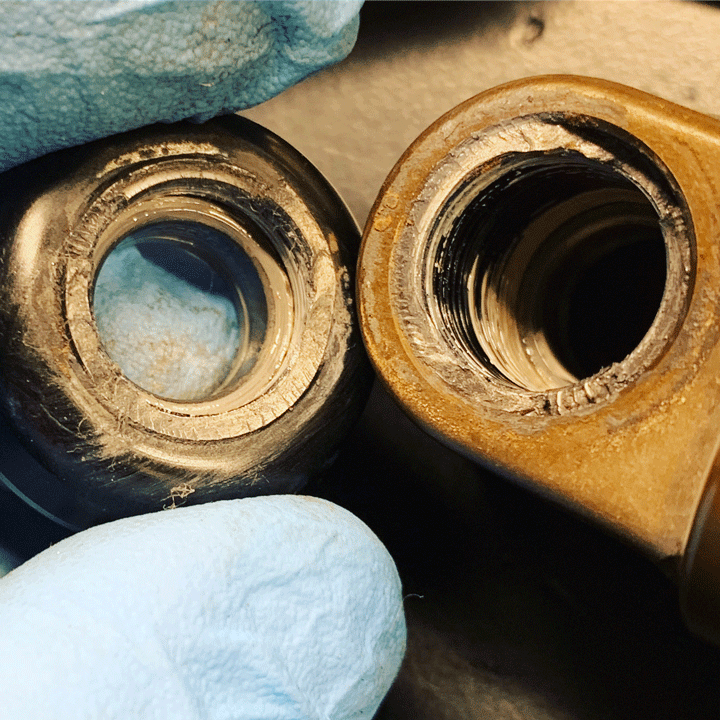
Home | Shop Talk | Background | Instruction
Shop Talk | Creaky Discussion Mountain Bikes
How About a Quick, Silly Story
It doesn't matter what bike you're riding. Sometimes it just gets creaky. As you pedal up the trail, each stroke of the crank driving you forward is also driving you crazy: the sound is unique, loud, and can be overwhelmingly annoying. The most profound part of this creaky noise? Everyone up the trail knows it's your bike and it's something that you need to fix.
Part of mountain biking is being in the hills with the quiet around you, enveloped by the dust kicked up by your riding pals, smelling deer poop on the air, and finishing it all off with a beer. Nowhere in that recipe for a good ride is the sound of creaky bike.
Off to the bike shop where you are met by a disillusioned mechanic who's loath to chase down a creak on any bike other than their own. Your plight is met with uncertainty and a bill-by-the-hour workorder. Your confidence that this can be resolved wanes like the moon on a cold night, lost in the wilderness. Hopeless, you return to your bed of hay in the barn to drink yourself to sleep on bourbon and tears.
It's a dire situation
Let's face it, when a mountain biker faces a creaky bike, it's often ignored.
Let's dive into the potentials for mountain bike creaks.
Tracking the Enemy
Mountain bikes experience extreme forces, something that road bikes will never ever know. The sheer torsion and flip-flop of rider strength and weight contribute to wear on all but the bikes decals. Generally, a seasoned – or marinated – mechanic will start with the obvious stuff.
- Loose axles
- Torque Pivot bolts for suspension bikes
- Check Bottom bracket interface for tolerance and torque
- Check crankset and pedals, chainrings, and other bolts
- Headset tolerance
Then the mechanic sets out on a test ride. Dismal noises emanate from the frame. Ew. Back to the work stand. Next up:
- Wheel bearings, or hub bearings, and freehub engagement system
- Bottom bracket bearings
- Pivot bearings (suspension frames)
- Frame cracks (which can be truly noisy, no matter the material)
- Cassette integrity
- Chain wear and lube
Test ride. Less noise. Progress! But still not satisfactory. Grunts and a lunch break, the mechanic makes notes and hangs the bike up for a while because this is immensely frustrating work.

This broken bearing was the cause of countless hours of searching and several visits to the mechanic. Many, many beers later, during a routine shock service, this bearing/mounting hardward came apart too easily. It didn't fall apart. Just was too easy, and you can see why. It was broken. This resolved a huge creak hunt.
One Night's Rest
Next day the mechanic has 4 cups of coffee, not yet on the clock they're thinking about your problem. Someone who should have probably signed up for public service or become and engineer, the mind always integrating work problems into breakfast. The next things to check are wheels. Swap the wheels out.
In this case, your spokes were singing like crickets on the rear wheel from being undertensioned. Test rides reveal this to be the problem. And in order to save you some cash that's roughly about where the search and destroy method ends. The process is always like this. We look at the obvious and large items. Slowly we work into the tiniest parts of the bike. And because creaks more or less sound the same all the time, trial and error is a seasoned approach.
Those of us who have had the opportunity to perform more than their share of creaky locating can quickly identify the sound and cause of most creaks on a mountain bike. Like the cry of an infant, certain nuances in the cry call attention to certain problems.
One way to avoid this is to have comprehensive preventative maintenance each season. I always recommend doing this really early in the season so the grease and oils are fresh for the months of abuse ahead.
-- Insight --